Art & Exhibitions
‘Love, Friendship, and Unashamed Social Climbing’: A New Show Reveals the Story Behind Fabergé’s Opulent Egg-Making Atelier
It's an egg-xstraodinary egg-xhibition.
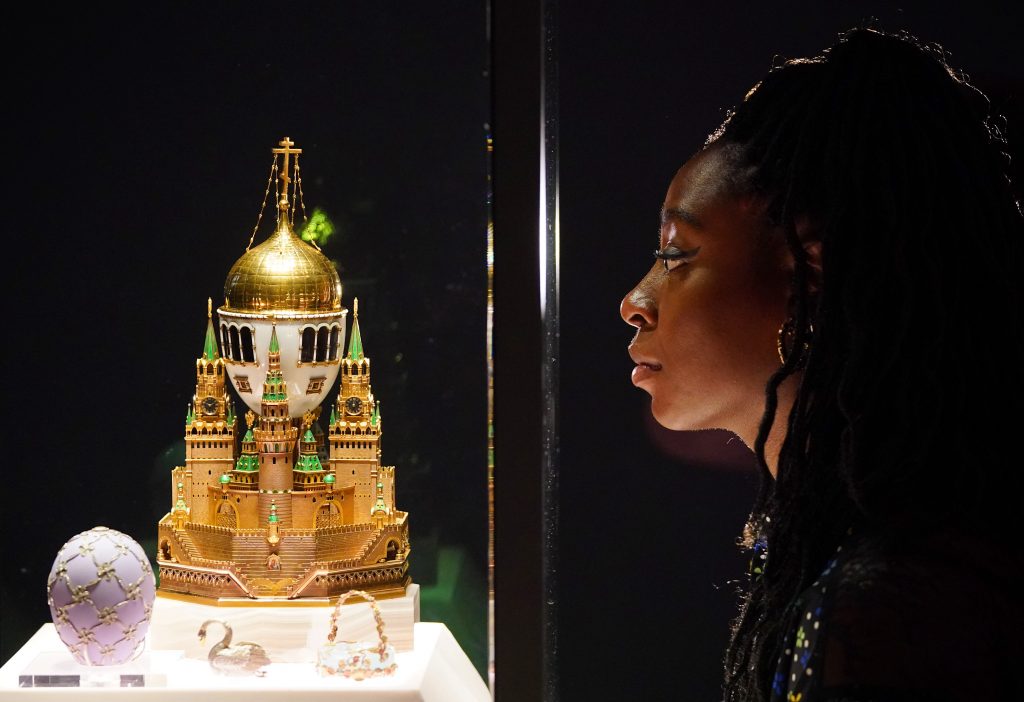
It's an egg-xstraodinary egg-xhibition.

Artnet News

Easter is coming early this year, thanks to an exhibition that just opened at London’s Victoria & Albert Museum (V&A), dedicated to the Russian goldsmith Carl Fabergé and his iconic eggs. After an extensive tour, the show is touching down in London, where the largest collection of the Imperial Easter Eggs will be on display, many for the first time in the U.K. The show also has a a section dedicated to the little-known branch of Fabergé’s firm that was located in London, and catered to a sophisticated and elite swathe of Edwardian society.
“The story of Carl Fabergé, the legendary Russian Imperial goldsmith, is one of supreme luxury and unsurpassed craftsmanship,” exhibition curators Kieran McCarthy and Hanne Faurby said in a statement. Through the opulent creations he created, the curators added, the show “explores timeless stories of love, friendship and unashamed social climbing.”

Fabergé’s premises at 173 New Bond Street in 1911. Image Courtesy of
The Fersman Mineralogical Museum, Moscow and Wartski, London
With more than 200 objects on display, the show focuses on the man behind the jewelry brand, its almost synonymous association with Russian elegance and the Imperial family, and the Anglo-Russian bond forged in part by Fabergé works. The Romanovs, Russia’s ruling family, were important patrons of Fabergé, and helped cement his role in high society as the official goldsmith to the Imperial court. His custom-made gifts, made from crystal, gold, rose-cut diamonds, often incorporated miniature portraits of family members and were exchanged between relatives.
The second part of the exhibition explores how Fabergé succeeded his father at the family firm and helped catapult it to new heights, by fostering an atmosphere of creativity and unparalleled craftsmanship. Ultimately, the firm that had once catered to the likes of Russia’s Emperor Nicholas II and Empress Alexandra Feodorovna, as well as England’s King Edward VII, King George V, Queen Mary, and Queen Victoria, was forced to pivot to aiding the war effort when Russia entered World War I in 1914, when it began to supply munitions instead of miniature treasures.
Although it ceased production, the legacy of Fabergé has endured, and will surely continue to fascinate visitors as they discover the history behind the design house.
Below, see highlights from the exhibition, on view through May 2, 2022.
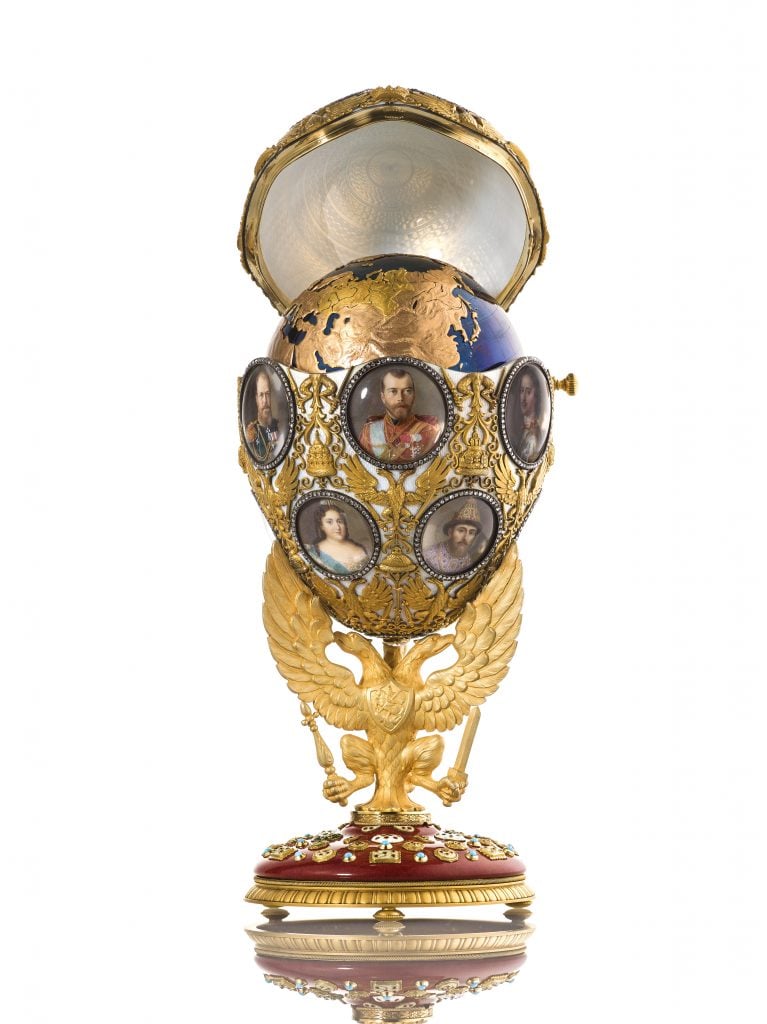
Romanov Tercentenary Egg, Fabergé. Chief Workmaster Henrik Wigström (1913) Photo: © The Moscow Kremlin Museums.

The Moscow Kremlin Egg, Fabergé (1906). Photo: © The Moscow Kremlin Museums. Courtesy of the V&A.
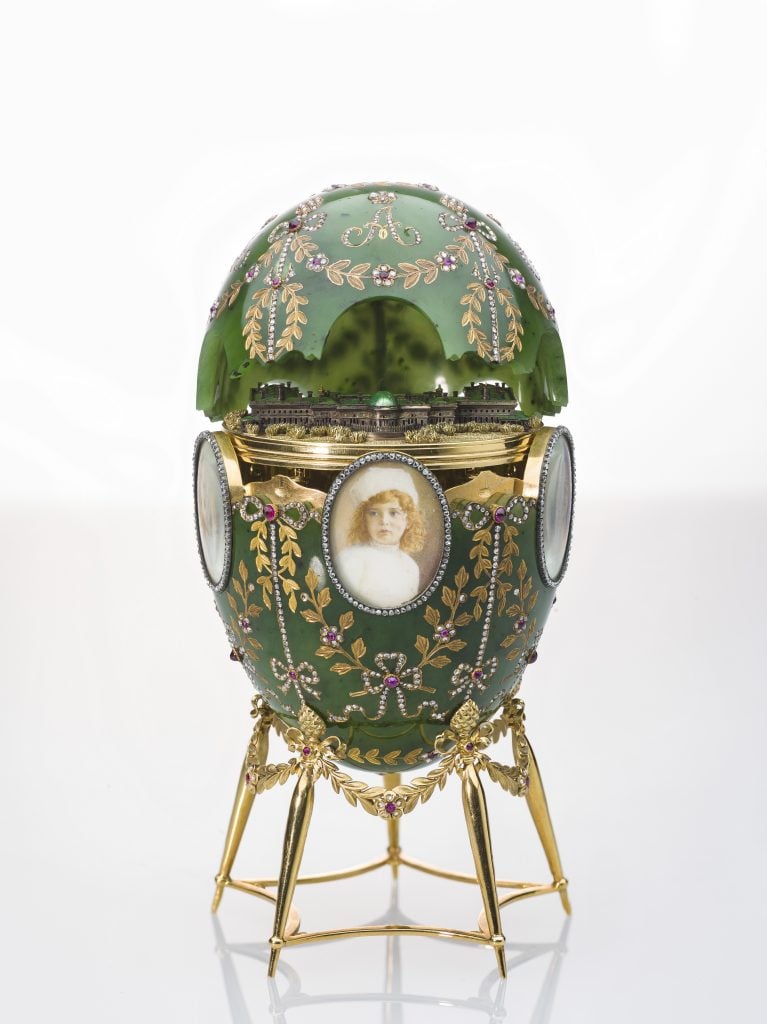
The Alexander Palace Egg, Fabergé. Chief Workmaster Henrik Wigström (1908). Photo: © The Moscow Kremlin Museums. Courtesy of the V&A.
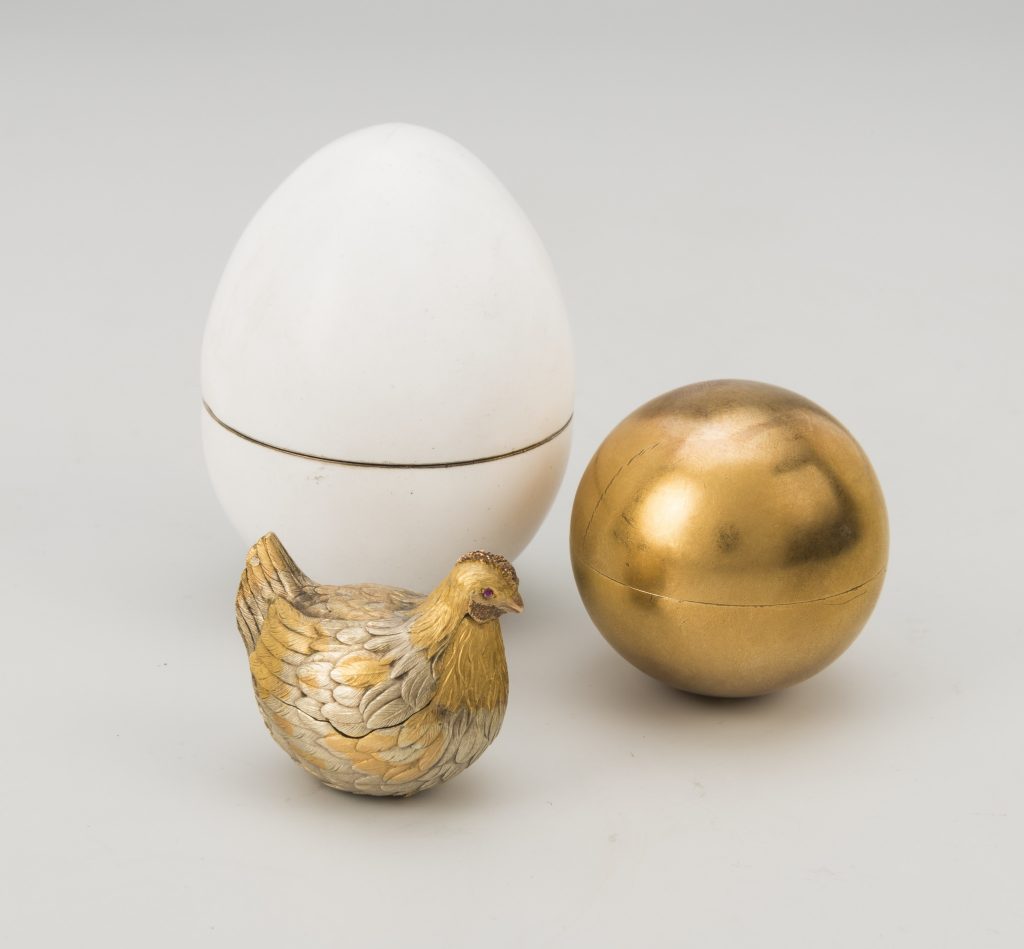
Hen Egg (1884-85). Courtesy of the V&A.
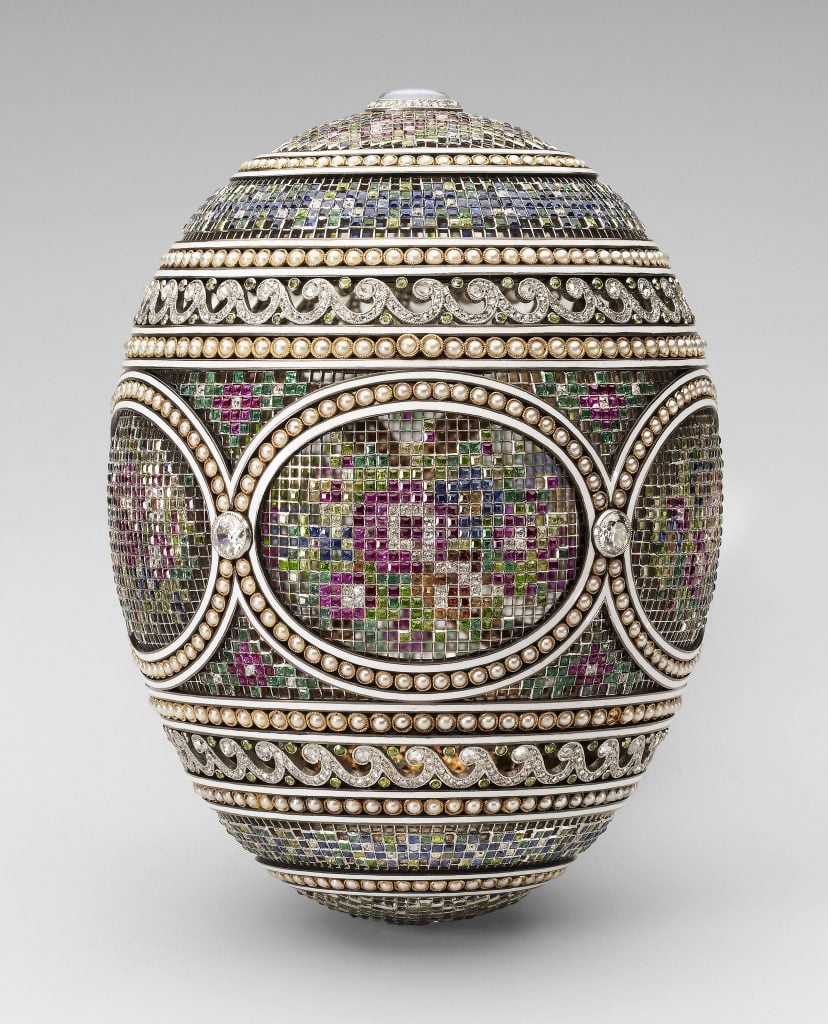
Mosaic Egg (1913-14). Courtesy of the V&A.
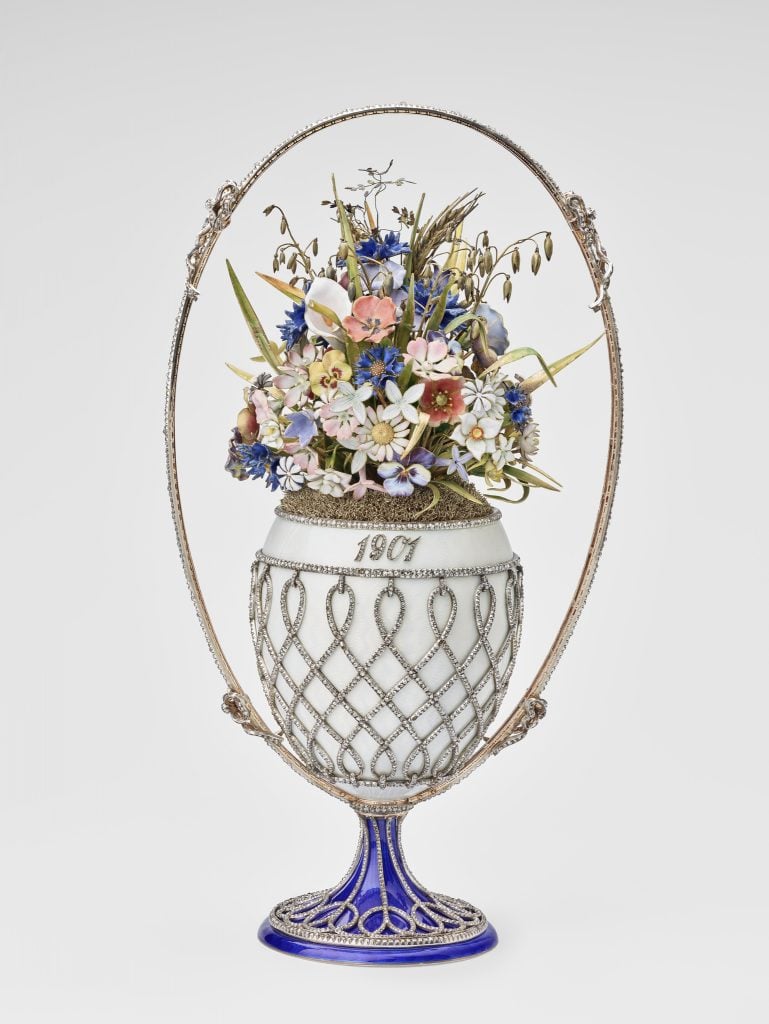
Basket of Flowers Egg (1901). Courtesy of the V&A.
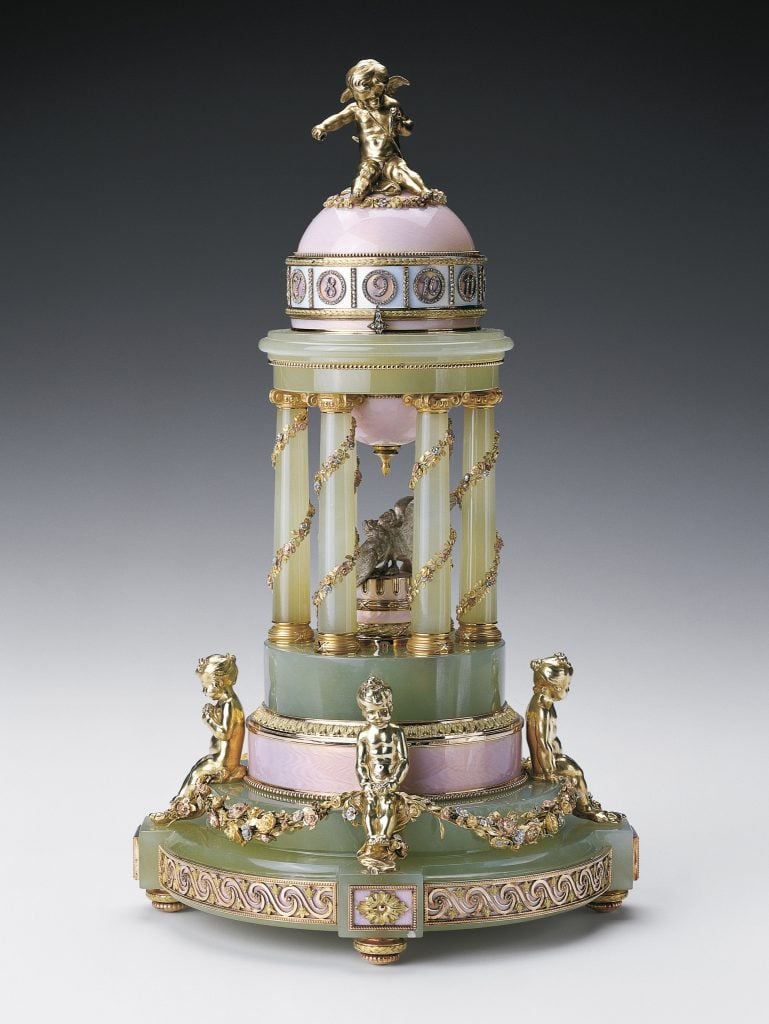
Colonnade Egg (1909-10). Courtesy of the V&A.

Red Cross with Triptych Egg, (1914-15). Courtesy of the V&A.

The Diamond Trellis Egg (1891–92). Courtesy of the V&A.
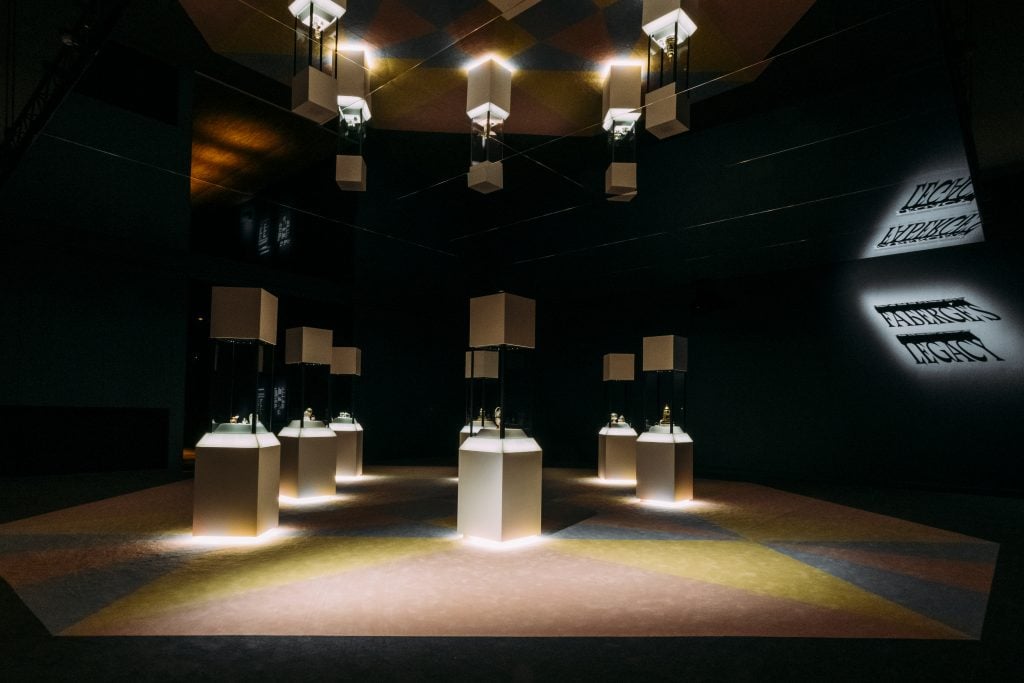
Installation view, “Fabergé in London: Romance to Revolution” at the V&A. Courtesy of the V&A.
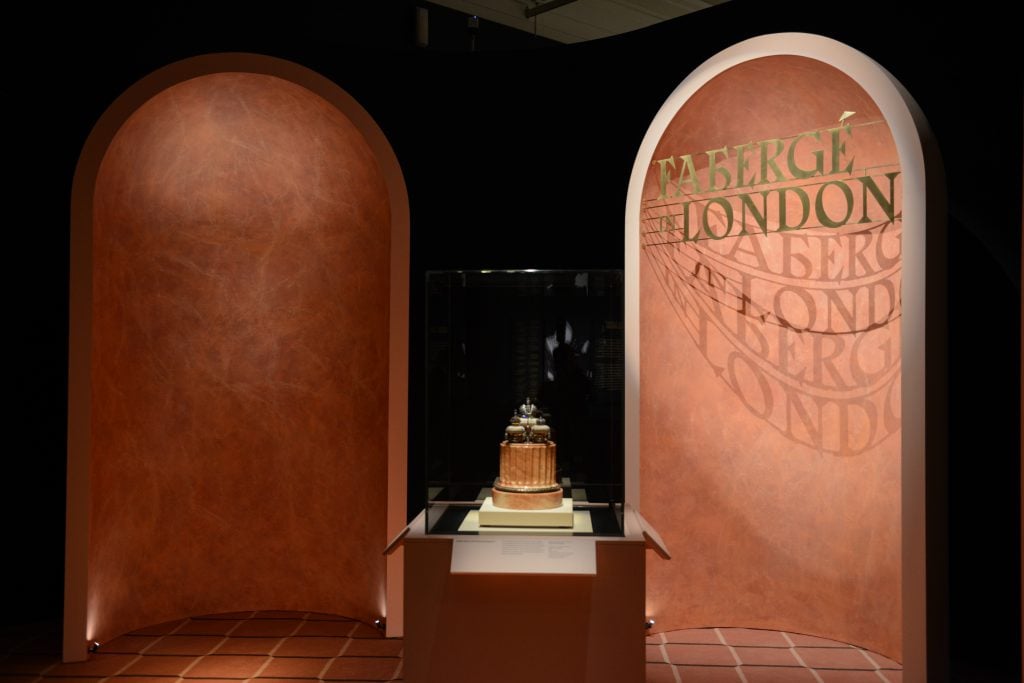
Installation view, “Fabergé in London: Romance to Revolution” at the V&A. Courtesy of the V&A.
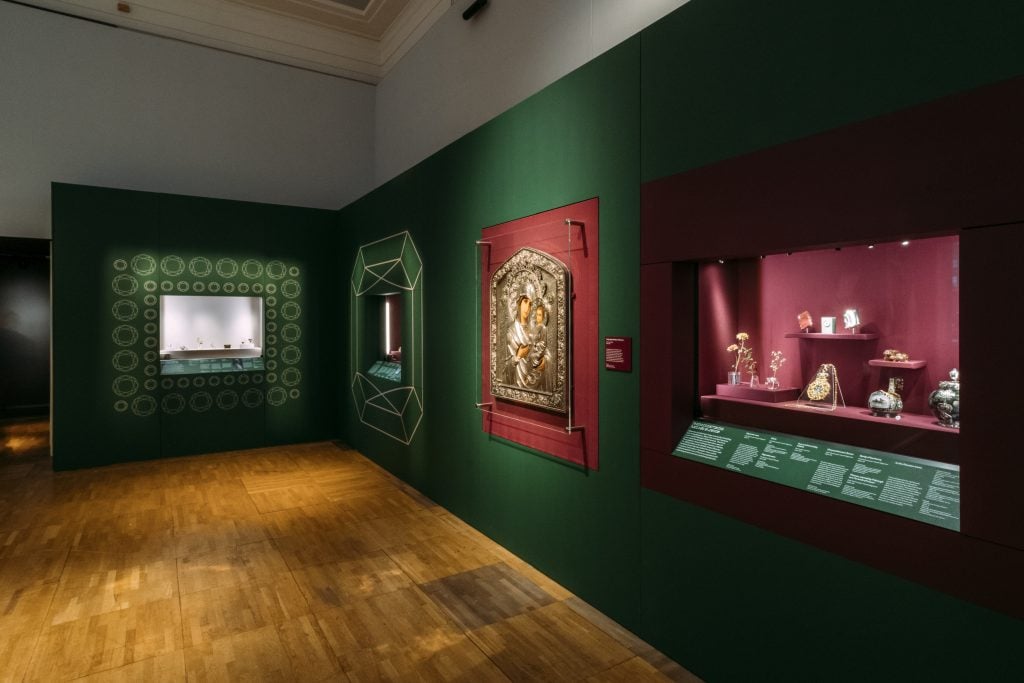
Installation view, “Fabergé in London: Romance to Revolution” at the V&A. Courtesy of the V&A.
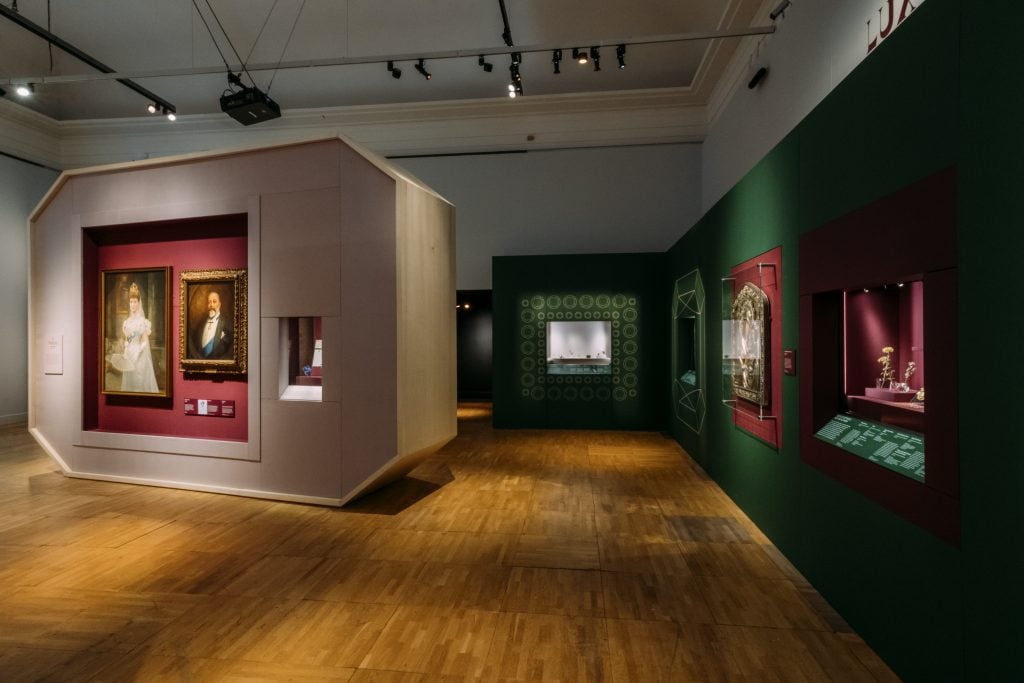
Installation view, “Fabergé in London: Romance to Revolution” at the V&A. Courtesy of the V&A.
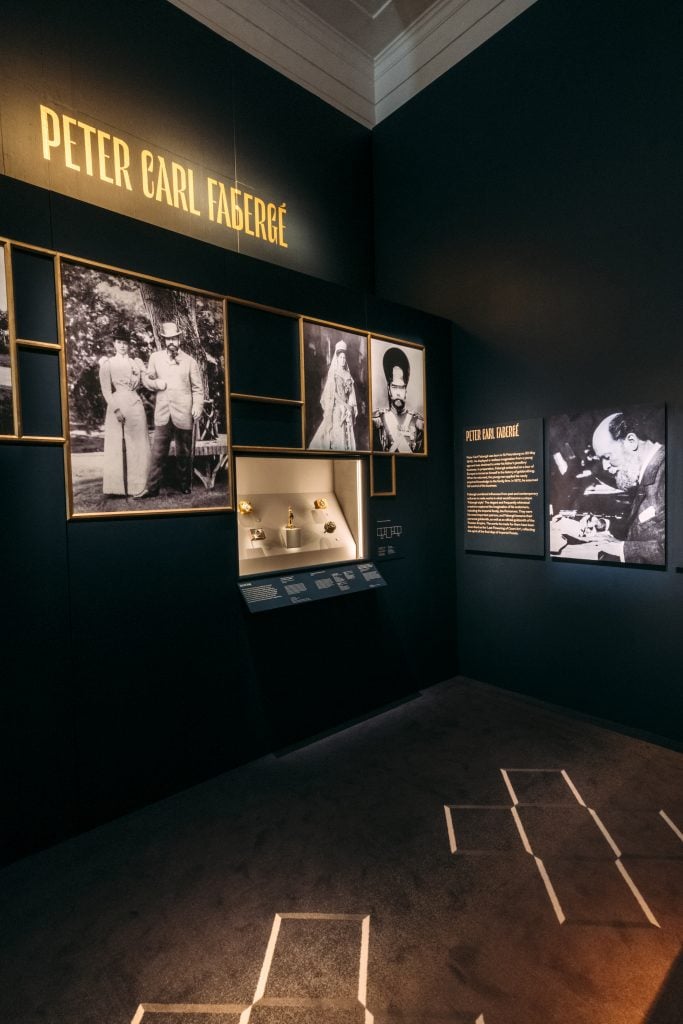
Installation view, “Fabergé in London: Romance to Revolution” at the V&A. Courtesy of the V&A.
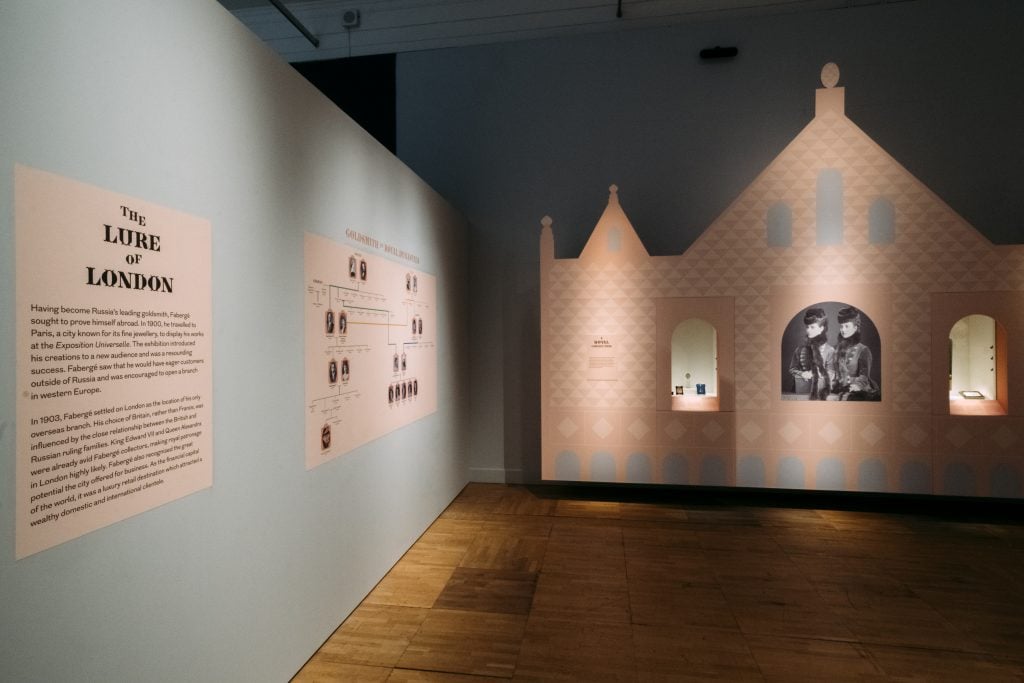
Installation view, “Fabergé in London: Romance to Revolution” at the V&A. Courtesy of the V&A.
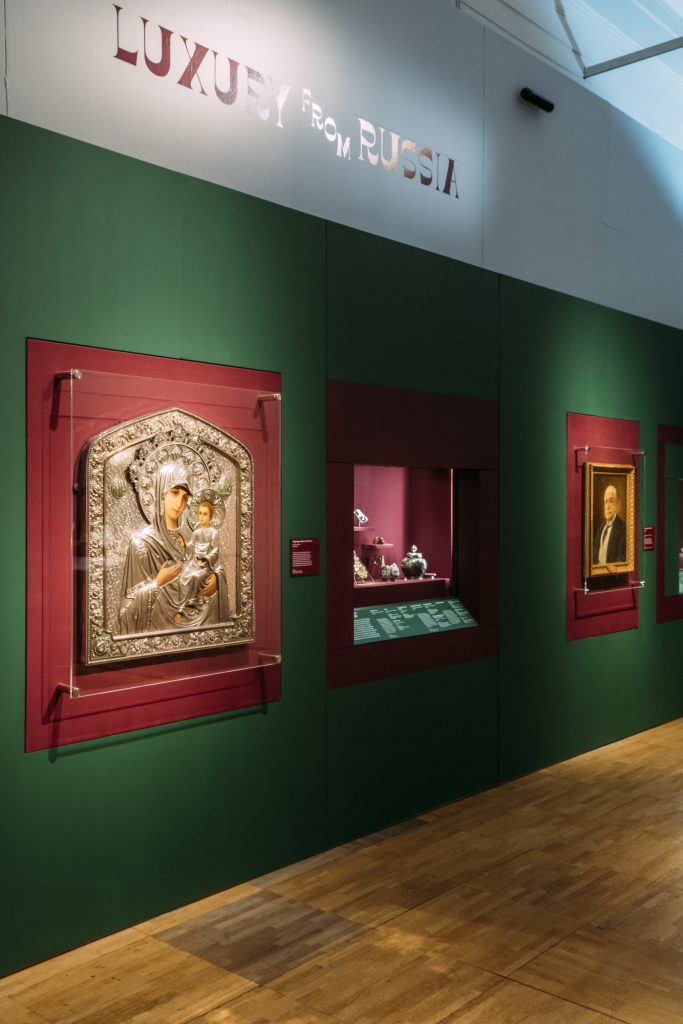
Installation view, “Fabergé in London: Romance to Revolution” at the V&A. Courtesy of the V&A.
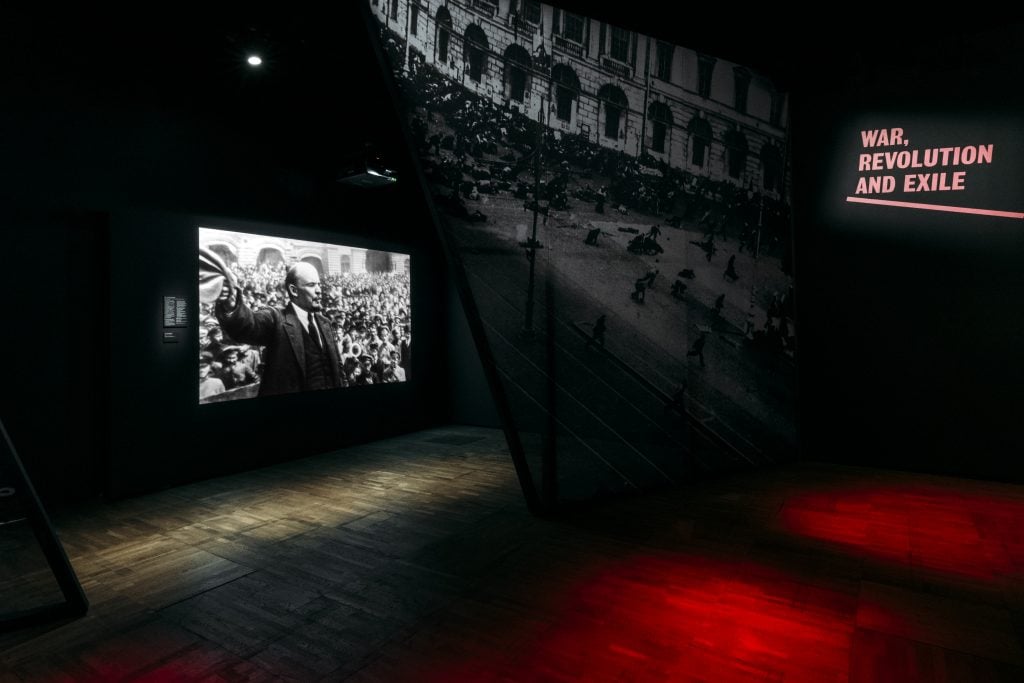
Installation view, “Fabergé in London: Romance to Revolution” at the V&A. Courtesy of the V&A.